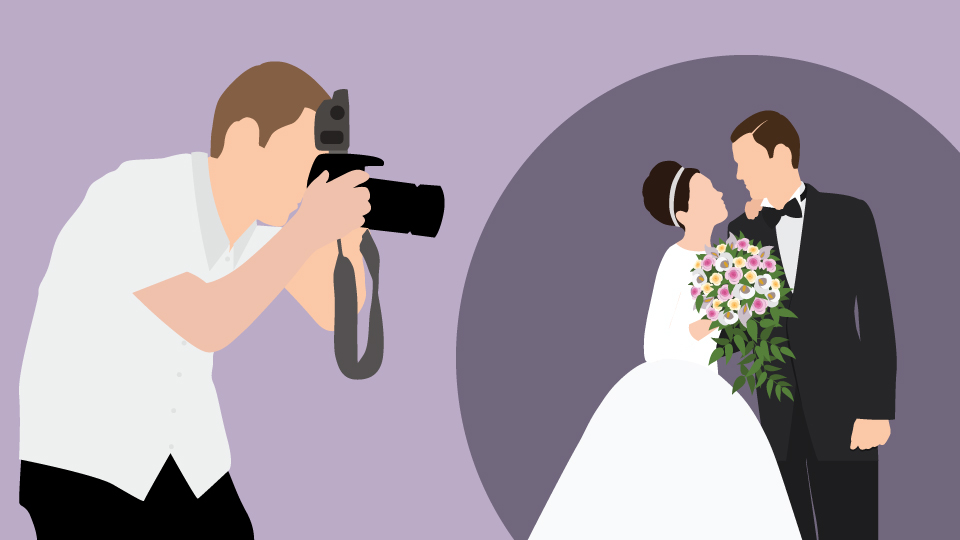Explore Ethical Considerations in Asian Wedding Photography.

A Look Into Ethical Issues with Asian Wedding Photography
The area of Asian wedding photography is distinct and dynamic, including more than just taking stunning pictures. It calls for a deep comprehension of local customs, sensitivity to personal space, and moral rectitude.
This article provides insights into how wedding photographers might approach their job with professionalism and empathy as it examines the major ethical issues in Asian wedding photography.
Key Points:
- Respecting Cultural Sensitivities: Understand and honor the diverse traditions and rituals of different Asian communities.
- Ensuring Consent and Privacy: Obtain explicit consent and respect the privacy of all individuals involved.
- Avoiding Stereotyping and Misrepresentation: Capture the authentic experience without relying on stereotypes or clichés.
1. Considering Sensitivities to Culture
Asian weddings are full of customs and cultural importance that vary greatly amongst Asian groups. Any wedding photographer hoping to capture these rituals in a genuine and respectful manner must understand and honor these cultural quirks.
Recognising Cultural Practices:
There is a wide range of customs surrounding Asian weddings, each with its own set of rites and ceremonies. For example:
Hindu weddings:
These celebrations include a number of highly significant customs. The bride’s “Kanyadaan” (giving away) and the “Saptapadi” (seven strides around the holy fire) are significant occasions that represent the couple’s spiritual unity.
Gaining an understanding of these customs aids in encapsulating their essence and their deep significance.
Sikh weddings:
The couple rounds the Guru Granth Sahib during the “Anand Karaj,” a major rite that represents their spiritual and emotional unity. Asian wedding photographers need to approach this process with the proper attention and respect its solemnity.
Muslim Weddings:
Two important components of a Muslim wedding are the “Walima,” or celebration feast, and the “Nikah,” or marriage document. Each has its own traditions and rituals, which need tact and comprehension in order to capture on camera.
Communication & Cultural Sensitivity:
It’s critical to keep lines of communication open with the couple’s families. Prior to the nuptials:
Talk About Expectations:
Have a detailed conversation with the couple on their expectations as well as any cultural customs that have special significance for them. The dos and don’ts of the ceremony from a wedding photography standpoint should be covered in this discussion.
Recognise Ritual Significance:
Find out the precise meaning behind the ceremonies and rituals that will be performed. This understanding makes it easier for you to recognise their significance and guarantees that your wedding photography adheres to their customs.
Adapt to Cultural Norms:
Recognise and accommodate the customs around attire, conduct, and proper picture technique. For instance, it may be customary in certain cultures to avoid using specific photographic equipment or to dress modestly at religious occasions.
2. Safeguarding Privacy and Consent
Foundational to ethical Asian wedding photography are obtaining permission and respecting privacy. It is crucial to make sure that everyone involved is at ease with how they are depicted.
Getting Explicit Consent:
Prior to the wedding, make sure you and the couple are in agreement on the following:
Photographic Permissions:
Talk about the moments that may be taken that are public and those that are private or delicate. To prevent future misunderstandings, this agreement has to be in writing.
Usage Rights:
Specify the intended usage of the pictures. Getting consent is necessary before using images on social media, marketing materials, or other open platforms. To further cement these agreements, a formal permission form might be used.
Honoring Personal Preferences:
At the nuptials:
Honor Requests for Privacy:
Some visitors may not want to be photographed. By enquiring ahead or paying attention to non-verbal clues, you may make sure that you are aware of and respect their preferences.
Be Inconspicuous:
To capture unscripted moments without violating someone’s personal space, use long lenses or tactful posture. Refrain from utilizing flash or creating loud sounds that can interfere with the event.
Managing Sensitive Moments with Care:
Deeply spiritual or personal moments are often included in Asian wedding ceremonies. Respond to these delicately by:
Sustaining a Respectful Distance:
Keep your distance from attention whether you are praying, meditating, or engaging in other private rituals.
Use quiet camera settings and stay away from flash photography during important or serious occasions. This demonstrates respect for the ceremony and all of the attendees.
3. Steer clear of misrepresentation and stereotyping
In addition to compromising the authenticity of your work, stereotyping and misrepresenting subjects may cause offense. Every wedding should be approached with an open mind and a dedication to correctly portraying the occasion.
Steer Clear of Clichés and Generalisations:
Every wedding is different, therefore it’s important to stay away from generalizations and clichés. Rather:
Emphasis on Individual Stories:
Write down each couple’s and their families’ distinct story. Emphasize intimate exchanges and situations rather than trying to fit them into preconceived notions or themes.
Honor Authenticity:
Place a focus on sincere feelings and experiences that capture the essence of the Asian wedding. This method aids in capturing the true essence of the festival.
Fostering Accuracy and Inclusivity:
Make sure the richness and intricacy of Asian civilisations are reflected in your work by:
Representing Diversity:
Identify and document the variety of components that make up the wedding. This covers many cultural customs, familial relationships, and individual narratives.
Consulting Cultural Experts:
If in doubt, consult other community members or cultural experts for advice. This makes it easier to make sure that you are accurately and politely represented.
Speaking with Cultural Experts:
Experts may provide insightful advice if you are unfamiliar with certain cultural customs or symbols. This method is beneficial:
To ensure that your photography respects these traditions, enhance knowledge by learning more about cultural subtleties and customs.
Assure Accuracy:
Seek advice from those who are familiar with the customs to avoid distorting or misinterpreting cultural features.
4. Handling Moral Difficulties in Post-Processing
Although post-processing is an essential component of Asian wedding photography, there are some ethical issues to be aware of. Take on these obstacles by:
Preserving Authenticity:
When making changes to photos, be sure that:
Avoid Making Too Many Changes:
While photo editing is common, refrain from making adjustments that take away from the context or importance of the events you’ve shot. Overediting a ritual scene, for instance, might distort its actual meaning.
Respect the integrity of cultural symbols and rituals in order to preserve them. Make sure that any adjustments maintain its original importance and purpose.
Using Images Responsibly:
Take into account the effects of sharing and using images:
Secure Permissions:
Make sure you have the couple’s consent before utilizing their photos for advertising or public displays. This allows people discretion over how their private moments are displayed while still respecting their right to privacy.
Respect Context:
Make sure the presentation of the photos respects the couple’s preferences and cultural sensitivity. Refrain from utilizing photos in any manner that might be seen as demeaning or exploitative.
Preserving Confidentiality:
It is important for Asian wedding photographers to guarantee the privacy of delicate or personal situations.
Safe Data:
To avoid abuse or unwanted access, safeguard digital data and make sure they are kept safely.
Respect Privacy:
Refrain from disseminating or exhibiting pictures that could jeopardize the privacy of those attending the wedding.
In summary
In order to guarantee that your Asian wedding photography is courteous and professional, ethical concerns are crucial. You may preserve the highest standards of ethical practice while capturing the beauty and importance of Asian weddings by being aware of and respectful of local customs, getting informed permission, avoiding misconceptions, and handling post-processing issues with tact.
The core values of ethical photography include respect for each cultural celebration’s authenticity and dignity, empathy, and open communication. Let these guidelines direct your approach to taking meaningful and respectful pictures as you advance in this fulfilling industry. This will guarantee that every moment you record accurately captures the happiness and importance of the event.





